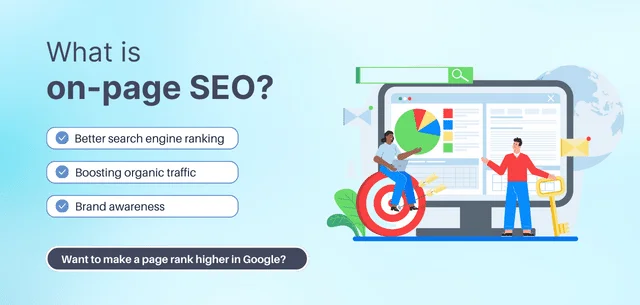Struggling to get your website seen in search results?! This guide unravels the mysteries of “What is On-Page SEO? The Ultimate Guide 2024”, your key to unlocking higher rankings and organic traffic in 2024.
On-page SEO, or on-site SEO, means making your web pages better for both search engines and people. This helps your pages show up higher on Google and brings in more visitors from search results.
Benefits of On-Page SEO:
- Proven content optimization strategies.
- Techniques to propel your site up search engine rankings.
- Tips for improving user experience and driving organic traffic.
- Advanced insights into the dynamic realm of SEO.
What is On-Page SEO?
On-page SEO means doing things on your webpage to make Google like it more. You follow the rules Google gives to improve how your page ranks. This is different from off-page SEO, where you get links to your site to boost its overall reputation.
Now, not all these things make a clear difference. Some directly affect your ranking, while others have a more indirect impact.
We’ve sorted them into two types of suggestions: direct ones that Google says help and indirect ones that might help in a roundabout way.
Why is On-Page SEO Important?
Making sure your website shows up on Google and other search engines is super important. When someone searches for something online, search engines look at your site and its content to see if it’s a good match for what the person is looking for.

Google is always changing how it decides which sites to show, so it’s crucial to keep your website up to date. To do this, you need to make sure your website is set up the right way.
This involves tweaking things that people can see on your site, like pictures and text, as well as things that only search engines see, like behind-the-scenes code. By doing this, search engines can understand your site better and rank it higher in search results.
Whether you have a big business or a small one, it’s really important to pay attention to this stuff. SEO, which stands for Search Engine Optimization, is a popular way to make sure your website does well online.
It’s a smart investment because, compared to other online marketing methods, it’s cost-effective and brings in visitors to your site for a long time.
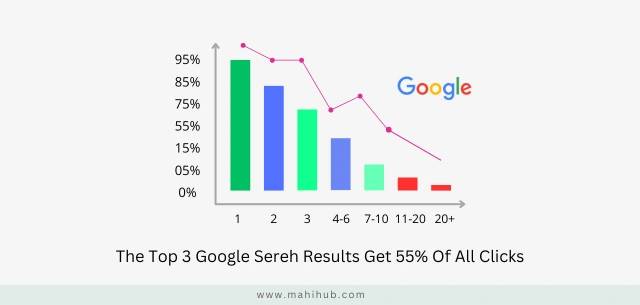
So, being on the first page of search results is crucial. The top result on Google gets about one-third of all the clicks for a search term, and the whole first page gets more than 90% of the clicks.
Almost half of all the people who visit websites come from search engines like Google, and around 40% of the money made online is connected to search engine traffic.
That’s why on-page SEO is a big deal. If your site isn’t optimized, it might miss out on chances to appear for searches related to your business. Without a good SEO plan, your site could get buried by other businesses in search results.
That’s why many companies hire experts in SEO because the world of online search is huge, with an industry worth around $59 billion.
On-page vs off-page SEO
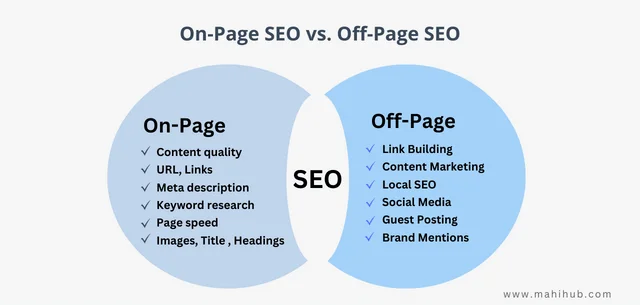
Both on-page SEO and off-page SEO play crucial roles in improving a website’s search engine ranking and overall online presence, but they focus on different aspects:
On-page SEO
Involves optimizing the content and structure of individual web pages on your website. Focuses on factors within your control, like:
- Keyword research and integration: Using relevant keywords throughout your content, including title tags, meta descriptions, and headings.
- Content quality and relevance: Creating high-quality, informative content that is relevant to your target audience and addresses their search intent.
- Website structure and navigation: Ensuring your website is well-structured, easy to navigate, and mobile-friendly.
- Page speed and technical optimization: Optimizing website loading speeds and addressing any technical issues that could hinder search engine crawling and indexing.
Off-page SEO:
Focuses on building a website’s authority and credibility by earning recognition and links from other websites. Involves strategies like:
- Link building: Earning backlinks from high-quality, relevant websites.
- Brand building and social media marketing: Building brand awareness and promoting your website through social media engagement and online communities.
- Guest blogging: Contributing valuable content to other websites in your niche to gain exposure and backlinks.

Think of it this way:
- On-page SEO: Optimizing your house to make it attractive and functional for visitors.
- Off-page SEO: Building a good reputation for your house in the neighborhood, attracting more visitors through word-of-mouth.
Both are essential for a successful SEO strategy
While you can improve your ranking with just one aspect, a balanced approach that addresses both on-page and off-page factors is generally more effective for achieving sustainable and long-term SEO success.
How to do On-Page SEO
1. On-Page SEO Basics
Create Unique and Valuable Content
Crafting unique and valuable content is pivotal for establishing a successful online presence. Let’s delve into the significance and strategies for achieving this without falling into the trap of plagiarism:
1. Why is Unique Content Important?
- Captures Attention:
Unique content sets itself apart in the vast online landscape, capturing the audience’s attention amidst the abundance of information. - Builds Credibility:
Offering original insights or information helps establish credibility, positioning you as an authority in your field and fostering trust among your audience. - Encourages Engagement:
Uniqueness increases the likelihood of content being shared. Whether informative, educational, or entertaining, original content has a higher potential for virality and broader reach.
2. How to Create Unique and Valuable Content:
- Know Your Audience:
Tailor your content to resonate with your target audience by understanding their interests, problems, and questions. - Research and Stay Informed:
Stay updated on industry trends, news, and developments to produce content that is current and relevant. - Tell Your Story:
Inject a personal touch by sharing experiences, perspectives, and insights, fostering a human connection with your audience. - Provide Solutions:
Address your audience’s problems with practical solutions, ensuring your content adds genuine value to their lives. - Use Varied Formats:
Diversify your content with articles, videos, infographics, or podcasts to cater to different audience preferences. - Quality over Quantity:
Prioritize quality over quantity, focusing on well-researched and thoughtful pieces that leave a lasting impact. - Engage with Your Audience:
Foster audience engagement by encouraging comments, responding to feedback, and involving them in discussions to better understand their needs. - Be Authentic:
Authenticity is paramount. Speak in your authentic voice, share genuine insights, and express your opinions, building trust with your audience.
By consistently delivering content that is both unique and valuable, you not only attract and retain an audience but also contribute positively to your online reputation and authority. Avoiding plagiarism ensures the integrity of your work and fosters a genuine connection with your audience.
Keyword Research
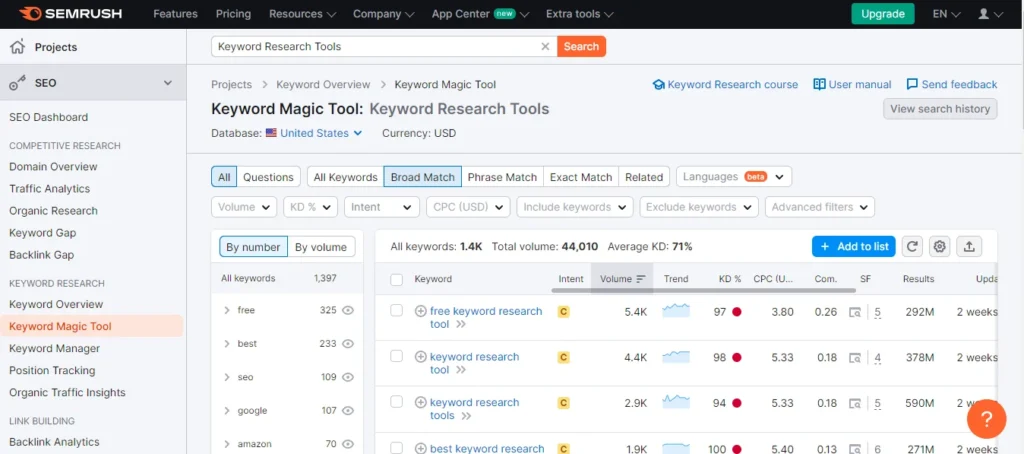
Keyword research is like finding out the words and phrases people often use when they search on the internet. It’s a crucial part of making sure your website or content shows up when people look for things online.
Here’s why keyword research is important:
- Discovering the Right Words: It helps you figure out the words related to your business or content that people are likely to use when they search.
- Checking How Many Searches: It shows you how often these words are searched. This helps you understand if there’s a lot of interest in those topics.
- Seeing the Competition: You can find out how many other websites are also using the same keywords. This helps you know how hard or easy it is to show up in search results.
- Making Your Content Better: Once you know the right words, you can use them in your website or content. This makes it more likely for your stuff to show up when people search.
- Giving People What They Want: Using the right keywords means your content matches what people are looking for. It makes your website more helpful for visitors.
Tools like Google Keyword Planner or SEMrush can help you do this research easily. By using the words people commonly search for, you can make your content more visible and useful to your audience.
Integrating keywords naturally in titles, meta descriptions, headings, and content.
In Titles
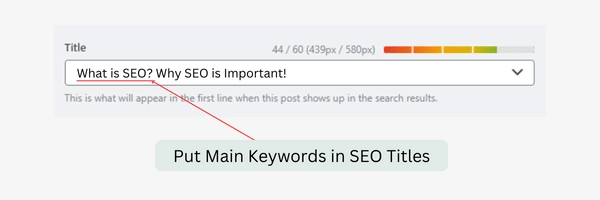
When you add words people often search for in your titles, it helps search engines know what your content is about. For instance, if your keyword is “easy recipes,” your title could be “Simple and Tasty Easy Recipes for You.”
In Meta Descriptions
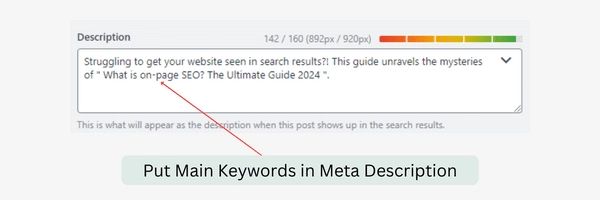
Meta descriptions are summaries that appear in search results. Including keywords here gives people a quick idea of what your content is about. For example, “Discover a variety of effortless and delicious easy recipes on our site – perfect for any home cook!”
In Headings
Headings break down your content, making it easier to read. Using keywords in headings helps both readers and search engines understand your main topics. For instance, within an article about easy recipes, you could have a heading like “Quick and Simple Dinner Ideas.”
In Content
Spread keywords naturally throughout your content. Let them fit into your sentences smoothly. For example, “If you’re searching for tasty and quick-to-make easy recipes, our collection of simple meals will inspire your cooking adventures.”
By using keywords in these places, you’re helping search engines understand your content better. This makes it more likely for people to find and enjoy what you share. Just remember, the key is to do it naturally, so it reads well for your audience.
Structure content for readability
- Use clear and concise language.
- Break down text into digestible paragraphs.
- Incorporate bullet points and numbered lists for better organization.
2. Optimize Title and Description Tags
Craft Compelling Titles and Descriptions
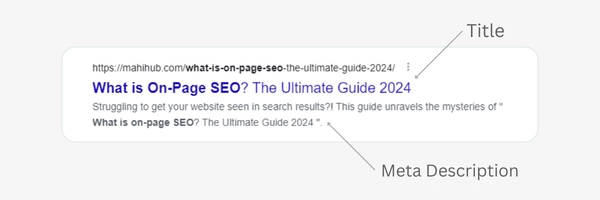
Developing effective titles and descriptions is vital for optimizing your online content. Here’s a concise, plagiarism-free guide:
1. Accuracy is Crucial
- Ensure that titles and descriptions truthfully represent your content to meet user expectations.
2. Strategic Keyword Use:
- Integrate pertinent keywords smartly, enhancing search engine recognition and visibility.
3. Conciseness and Engagement
- Maintain titles within approximately 60 characters and meta descriptions around 160 characters for clarity and impact.
4. Significance of the Process
- Enhances Click-Through Rate (CTR), elevates user experience, improves search engine visibility, and provides a competitive advantage.
Follow these guidelines to craft compelling titles and descriptions, elevating the visibility and appeal of your online content authentically.
Headings and Subheadings
Use headings (H1, H2, H3) to structure content.
1. Importance of Headings
- Headings serve as the backbone of your content structure, breaking it into organized sections. They guide readers through your material and make it easier to comprehend.
2. Types of Headings (H1, H2, H3):
- Utilize Heading 1 (H1) for the main title of your content. This provides the overarching theme.
- Heading 2 (H2) is employed for subheadings, dividing content into distinct sections.
- Heading 3 (H3) is further used to specify subsections within H2 sections, providing a hierarchical structure.
Improve readability and indicate important sections to search engines.
Headings play a vital role in enhancing the readability of content in multiple ways. Initially, they function as clear signposts, breaking down intricate information into more manageable sections.
This not only makes the content more digestible but also facilitates effortless navigation for readers. Additionally, headings contribute to the scannability of content, a common behavior among online readers who prefer scanning before engaging fully.
Offering a quick overview, headings empower users to identify and focus on the sections most relevant to them. Lastly, well-structured headings contribute to an inviting content experience, prompting readers to delve deeper into a piece that is both easy to follow and understand.
This trio of advantages underscores the pivotal role that headings play in ensuring content is both reader-friendly and engaging, without compromising on originality.
URL Structure
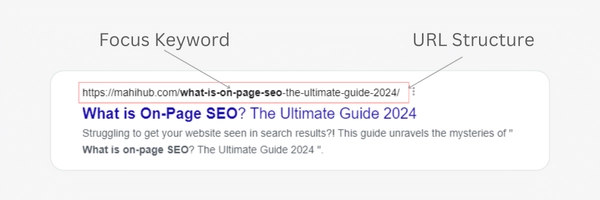
- Use clear, descriptive URLs.
- Incorporate relevant keywords and avoid lengthy, complex structures.
3. Craft Captivating and Valuable SEO Content
High-Quality Content Creation

Emphasize creating unique and valuable content
Emphasizing the creation of distinctive and valuable content is crucial for online success. Crafting material that informs, educates, or entertains your target audience establishes a connection that goes beyond mere visibility.
Offering content distinguished by its uniqueness and genuine value ensures that visitors remain engaged, finding authentic utility in what you provide.
Prioritize quality over keyword stuffing
Prioritizing quality over keyword stuffing enhances your content strategy. While keywords are vital for SEO, saturating your content with them can compromise readability and authenticity.
Quality content resonates more with audiences and, over time, yields superior search engine rankings through genuine engagement, steering clear of any concerns related to plagiarism.
Strategies for Engaging and SEO-Friendly Content
Craft content that engages users and aligns with SEO goals
Craft compelling content that engages users while aligning with SEO goals. Creating valuable information is key to keeping your audience on your page, positively impacting optimizare SEO metrics.
Use captivating language, visuals, and storytelling to connect with your audience. Seamlessly integrate relevant keywords to enhance search engine visibility, striking a balance between creativity and SEO optimization for maximum impact.
Prioritize informative content with strategic SEO elements
Emphasize informative content enriched with strategic SEO elements to establish a robust online presence. Focus on delivering valuable information that addresses user queries and needs. Integrate well-researched keywords, meta tags, and a user-friendly structure for effective SEO.
Prioritizing informative content not only adds value to your audience but also boosts your website’s search engine ranking, establishing authority in your niche and attracting sustained organic traffic.
4. Optimize Your Content for SEO
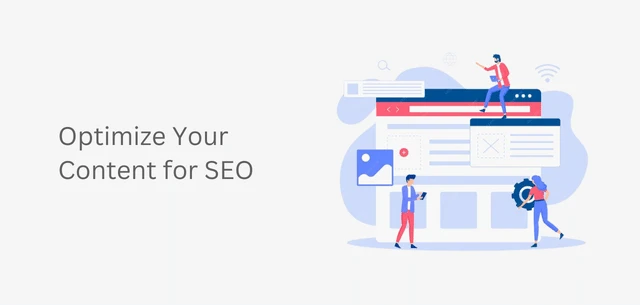
Techniques for Content Optimization
Optimize Content Structure, Headings, and Keyword Usage
To enhance online visibility, optimizing content structure, headings, and keyword usage is imperative. A well-structured format, coupled with clear headings, not only facilitates reader comprehension but also communicates the content’s relevance to search engines.
Thoughtful integration of keywords, and avoiding excessive use, contribute to a better understanding by search engines. Striking this balance ensures a user-friendly experience while elevating SEO rankings authentically.
Utilize Tools and Resources to Enhance Content Optimization Efforts
Effectively optimizing content requires the use of tools and resources. Platforms like Google Analytics, SEMrush, or Yoast offer valuable insights into keyword performance and overall SEO health.
These tools empower content creators to refine strategies, monitor progress, and stay ahead in the ever-evolving realm of online visibility.
Regular utilization of such resources guarantees that content remains optimized, engaging, and aligned with the latest SEO best practices, ensuring authenticity in every approach.
5. Optimize for CTR
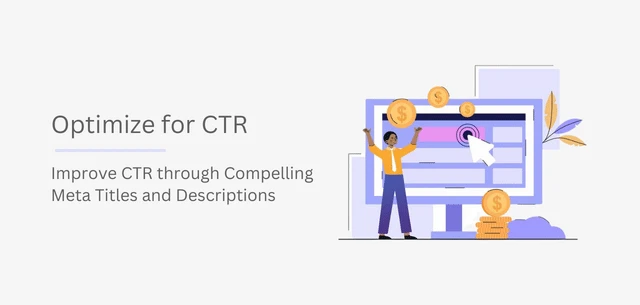
Understanding Click-Through Rate (CTR)
Recognize the Significance of CTR in On-Page SEO
Understanding the pivotal role of Click-Through Rate (CTR) is essential in on-page SEO. CTR measures the percentage of users who click on your website’s link after encountering it in search results.
A higher CTR signals to search engines that your content is pertinent and engaging, positively impacting your rankings. Recognizing and optimizing for CTR enhances the visibility and effectiveness of your web pages, resulting in increased organic traffic.
Improve CTR through Compelling Meta Titles and Descriptions
Elevating your Click-Through Rate (CTR) involves creating engaging meta titles and descriptions. These succinct components serve as your content’s advertisement in search results.
Crafting titles and descriptions with clear, persuasive language and relevant keywords distinguishes your snippet, enticing users to click. By developing compelling meta titles and descriptions, you boost the probability of users selecting your link, ultimately enhancing your on-page SEO and attracting more visitors to your site.
6. Some On-Page SEO Tips
Advanced Strategies
- Dive into advanced on-page SEO strategies.
- Leverage technical SEO elements for improved search visibility.
Conclusion
Recap of Key Learnings
- Summarize essential takeaways from the guide.
Final Thoughts on Mastering On-Page SEO
- Emphasize the ongoing nature of on-page SEO.
- Encourage consistent implementation of strategies for improved search engine ranking and increased organic traffic.


